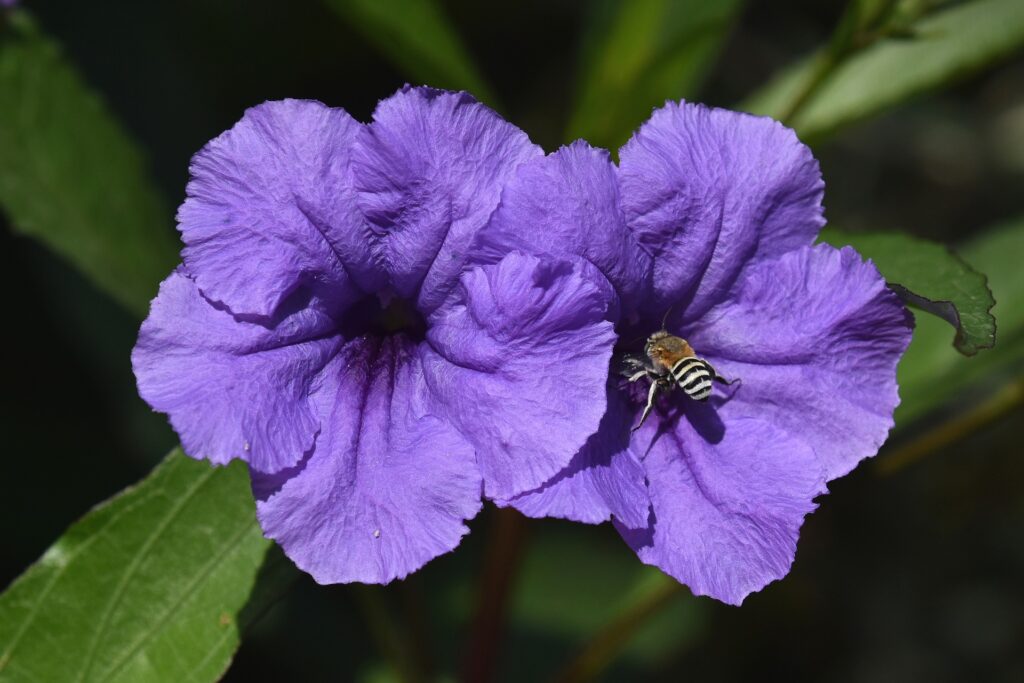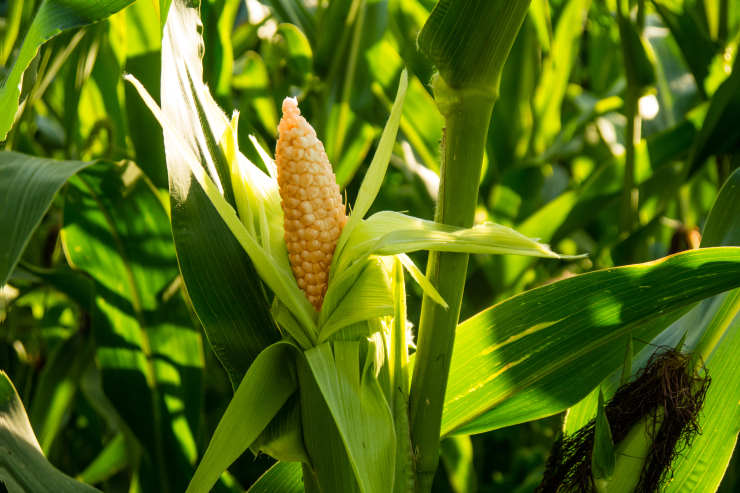Petunias: How to Plant, Grow and Care
Do you have a petunia that you are trying to grow? It can be frustrating. The plants seem to do everything they can to get away from you, and they are hard to keep under control once they have been uprooted. However, if you follow some basic guidelines, your petunias will not only grow into beautiful flowering plants–they also make great additions to your home décor!
Stunning petunias are among the most well-liked flowers due to their amazing blossoms and protracted blossoming time. By summertime, they become lanky as most annuals do, so you should cut the shoots back to approximately half their original length. See how to grow petunias and care for them to keep them in bloom.

Are Petunias annual or perennial?
Petunias are annuals that can be grown as tender perennials in zones 9 to 11. These colorful annuals come in many colors, and patterns and bloom from spring until frost. They can add pop to your front lawn and are often used in borders, containers, hanging baskets, or even as seasonal groundcover. Some petunias have a slight fragrance. Their height varies from 6 inches to 18 inches and they can spread along the ground anywhere from 18 inches to 4 feet.
Can petunias grow in shade?
Although they may take a little moderate shade during the hot, bright summers, petunias like to be cultivated in full sun. They thrive on soil that is rich in nutrients, wet but well-drained. To keep moisture in sandy soils that drain extremely well, add lots of organic matter to the soil, such as garden compost, well-rotted manure, or another soil-improving material.
Kinds of Petunias
Grandifloras, which have bigger blooms, and multifloras, which have smaller flowers and are more resilient to rain, are the two types used as bedding.
Surfinia, Wave, Tumbelina, Supertunia, and Cascadia series are petunia varieties that spread or trail.
See Also: Monstera deliciosa plant and care
Sowing petunias
The annual or bedding petunias may be grown from seed inside in warm spring climates at a temperature of 18-24°C (65-75°F) in cell trays, seed trays, or tiny pots. When plants are big enough to handle, prick them out into cell trays or tiny pots and let them continue to grow at a temperature of 50 to 65 degrees Fahrenheit (10 to 15 degrees Celsius) in bright light. Before putting the seedlings outdoors once all danger of frost has gone, gradually acclimate them to outdoor circumstances for 7 to 10 days. Young petunia seedlings are available from garden centers and mail-order providers in the late winter/early spring if you don’t have the resources to cultivate them from seed.
Planting petunias
In May/June, after the danger of frost has passed, plant out petunias. Dig a good-sized planting hole in the garden and add organic matter to the base of the hole. Place the rootball in the planting hole and adjust the depth so that it is planted at the same depth as it was originally growing (except for hardy fuchsias). Mix in more organic matter with excavated soil and fill in the planting hole. Apply a granular general feed over the soil and water well.
Applying a 5-7.5cm (2-3in) deep mulch of well-rotted garden compost or similar over the soil will help maintain soil moisture and keep down weeds. If you have a warm greenhouse, you can plant up containers and baskets in spring and grow on them until they are ready to place outside in late May/early June. This way you’ll have flowers earlier in summer!
How to care for petunias
To prolong the flowering season, be sure to water regularly and apply liquid fertilizer in the summer. If your bedding petunias are in containers, make sure you keep them evenly moist. Overwatering could cause leggy plants with few flowers. Feed regularly throughout the summer with a high potash liquid fertilizer to ensure continuous flower production until autumn frosts damage your blooms.
To promote new growth and encourage more blooms, cut any straggly stems back hard and then feed them with a liquid fertilizer to stimulate fresh new growth. Once damaged by frosts, dig up bedding petunias and compost them in autumn.”
In local garden centers, you may discover a variety of petunias, as you do with practically any bedding plants these days. Plant petunias in late January through mid-March for the greatest results, or from late September through early November.
Perennial, trailing varieties can be cut back hard in autumn, tidied up to remove dead or damaged growth, and carefully lifted. Pot them up in pots just big enough to take the rootball and some fresh potting compost around the sides. This will help them grow well during their first winter indoors. overwinter in a light, frost-free place – preferably a greenhouse or cool conservatory.
Plant care tips
The following “best management measures” will help you enjoy your petunias from now until late spring:
– The garden bed should be well prepared to provide for adequate internal drainage and aeration.
– To add nutrients to landscaping beds, use fresh, finished compost that is rich in nutrients.
Apply a slow-release fertilizer during planting if you want to use a conventional fertilizer strategy.
– Ensure that the soil pH in landscaping beds is between 5.5 and 6.0.
– Decide on a landscape site with direct sunlight. Plant petunias in a somewhat shady area if you want them to last longer into the summer, but be aware that there will be less blossoming.
– Finish the petunia planting in the late winter or early spring around mid-March.
– Only irrigate when necessary. Problems with root rot and stem dieback are brought on by overwatering.
– For optimum aesthetic improvement, be active and plant in large quantities.
– After the first peak bloom, lightly deadhead for continued performance until the late spring months.
Types of petunias
Petunias are categorized into many categories, primarily according to bloom size:
1. The most resilient and productive petunias are multiflora varieties. They are perfect for summer bedding or in a mixed border since they have smaller but more numerous blooms (because they are more tolerant to wet weather).
2. Grandiflora petunias produce exceptionally huge blooms and are best grown in pots or hanging baskets (because they are more susceptible to rain damage). Due to their susceptibility to rotting during humid, hot summers, these huge petunias frequently do not thrive as well in the south.
3. Floribundas are a hybrid of the Grandiflora and multiflora plant families. Similar to multiflora types, they are free-flowering and have medium-sized flowers.
4. Compared to other petunias on the market, milliflora petunias are significantly smaller. Despite being barely 1 to 1½ inches broad, the blooms are plentiful and bloom the entire season.
5. Low-growing, spreading, or trailing petunias can spread as much as three to four feet. The blooms develop throughout the whole length of each stem, forming a stunning, vibrant ground cover. They may be utilized in hanging baskets or window boxes.
Conclusion
Petunias are an incredibly beneficial addition to any home or business. They provide fantastic color, beautiful fragrances, and a fun, unique look to any indoor or outdoor space. Petunia bushes can be purchased at most garden supply stores and nurseries, and they are relatively self-sufficient when it comes to overall needs. Whether you decide to grow these spiky flowers indoors or out, petunias’ sweetly scented blooms will be sure to please visitors and guests of any home or business.
FAQS
1. How do you plant petunias in a planter?
The more space a plant has to grow, the more likely it will thrive. Generally, try to plant no more than 3 Petunias in a 12-inch pot. Porous planters, like unglazed ceramic and terracotta, allow the soil to dry out more quickly, which is suitable for Petunias.
2. What is the best way to grow petunias?
Petunias require full sun to avoid becoming spindly. In the shadow, they don’t often blossom well. Particularly in containers, the soil should be able to drain well and not become too damp. In order to encourage optimum growth, it should also be relatively fertile.
3. What month is best to plant petunias?
You may purchase a broad variety of petunias at nearby garden centers, as you do with practically any bedding plants these days. Plant petunias in late January through mid-March for the greatest results, or from late September through early November. 20
4. Do petunias grow back every year?
Although petunias are perennials, they are frequently treated as annuals. In warm, all-year-round areas, they frequently endure and even blossom during the winter. Petunias must be kept indoors during the winter if you live in a colder region and want them to bloom again in the spring.
5. What is the best fertilizer for petunias?
Throughout the growing season, use a balanced liquid fertilizer with an 8-8-8 or 10-10-10 ratio, or use a product like Miracle Grow. The plants will develop steadily and produce a lot of blooms if they are fed regularly during the growing season.
6. How often should I water?
Because petunias like direct sunshine, be careful that warmer weather might cause container plants to dry out more rapidly. The plants require two daily waterings throughout these times. When the top 12-15 cm (5-6 inches) of bedding plants start to dry up, they require water. Plants that are in beds require heavy watering once a week.


